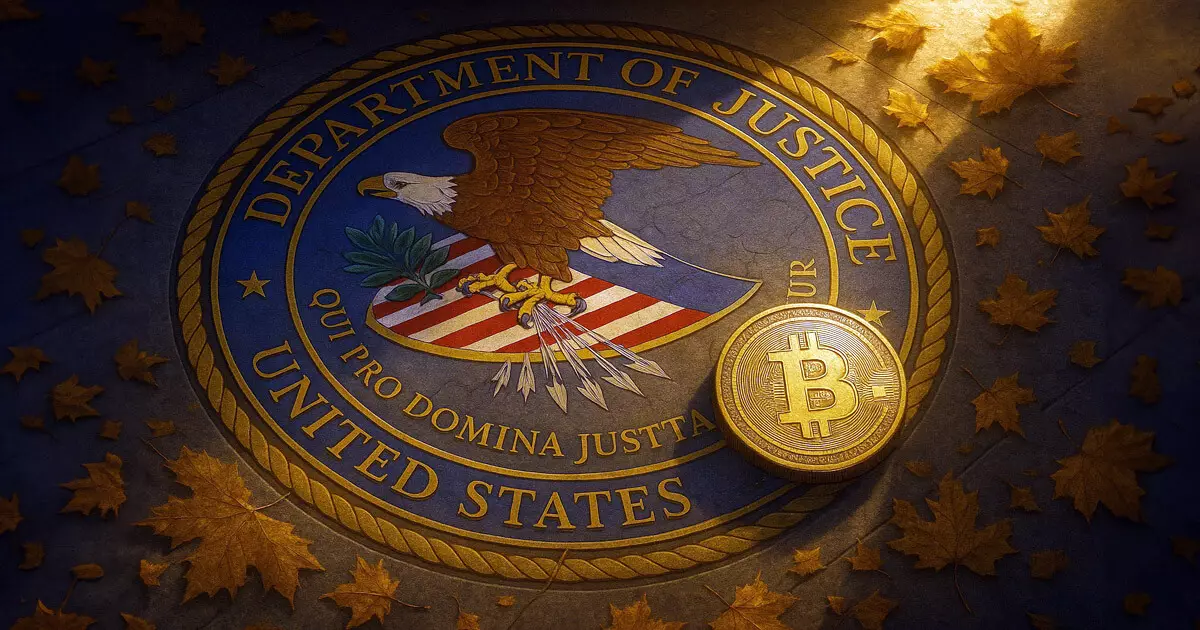The digital asset landscape has revolutionized finance, yet it stands on shaky ground when it comes to victim compensation. Recent moves by the US Department of Justice (DOJ) to revisit how victims of digital asset fraud are compensated have unveiled a complicated maze of valuation methods that feel antiquated at best and deeply unjust at worst. With numerous high-profile collapses—like those of FTX, Celsius, and Voyager—there’s a growing unease regarding whether victims are being treated fairly under the current regulatory framework. Moreover, the stark disparity between the current valuations of digital assets and the repayments afforded to their victims raises serious ethical concerns.
Understandably, the crypto collapse phenomenon has left many investors in dire straits, with a significant number of them seeing their investments dwindle into near-worthlessness. What’s alarming is that victims are compensated based on the dollar value of their holdings at the time they filed their claims, not at the current market rates. For instance, when FTX declared bankruptcy in November 2022, Bitcoin’s price languished below the $20,000 mark. Fast forward to January 2025, and it has skyrocketed to over $108,000—a staggering appreciation of over 500%. Yet, victims are receiving compensation rooted in outdated valuations, stripping them of potential gains they should rightfully access.
The Regulatory Quagmire
At the heart of the DOJ’s review is a stark reality: current regulations often shield perpetrators of fraud while underscoring a fundamental failure to adapt to the unique characteristics of digital assets. The existing framework limits recovery solely to the dollar value of assets at the time of fraud, effectively sidelining the upside potential that victims deserve. This regulatory stagnation raises questions about the commitment to justice in a rapidly evolving digital sphere. Affected investors like “Mr. Purple,” an advocate for FTX creditors, argue passionately that digital assets should be granted legal recognition that mirrors traditional financial instruments. The inconsistency in how these assets are treated in bankruptcy cases further fuels the fire for reform.
The DOJ’s recent initiatives to evaluate regulatory changes signal a much-needed acknowledgment of the current shortcomings. By focusing on possible reforms to the bankruptcy code, particularly concerning the peculiarities of digital assets, the DOJ is opening the door to a much-needed discourse on fairness and equity. As a center-right observer, I advocate for enhanced victim protections which could serve as a catalyst that might bring about significant and long-overdue regulatory changes.
Shifting Focus: From Enforcement to Consumer Protection
Interestingly, along with this review, the DOJ has dismantled its National Cryptocurrency Enforcement Team (NCET) in a stark shift of focus. The previous initiative aimed primarily at investigating crypto-related crimes; however, it has now pivoted to empowering proactive measures against straightforward criminal activities such as scams and market manipulation. While commendable, this shift introduces a large gray area where legitimate entities like crypto exchanges and decentralized tools might suffer from oversight—or worse, mischaracterization. Striking a balance is crucial.
In tandem with this reorientation, the DOJ is engaged in President Donald Trump’s Working Group on Digital Asset Markets. This cooperative effort is vital for addressing regulatory intricacies. Nonetheless, while it aims to bring clarity, questions linger over whether adequate representative voices from affected investors will contribute meaningfully to this dialogue. The urgency for clear legislation that equally protects consumers and promotes innovation in the digital asset market cannot be overstated.
A Call for Urgency and Recognition
The DOJ’s genuine exploration into improving compensation for victims of digital asset fraud marks a critical juncture for justice. Yet it simultaneously surfaces the broader issue of how digital assets are perceived and treated by regulatory bodies. Failure to address these disparities not only perpetuates an inherent injustice but also undermines the very principles of financial equity we claim to uphold. The proposed reforms signal hope, but they are merely the opening act in a much grander performance that needs a push towards meaningful change. As advocates for justice work tirelessly for recognition, the ripple effects of these discussions will undoubtedly shape the future landscape of digital assets in America.

